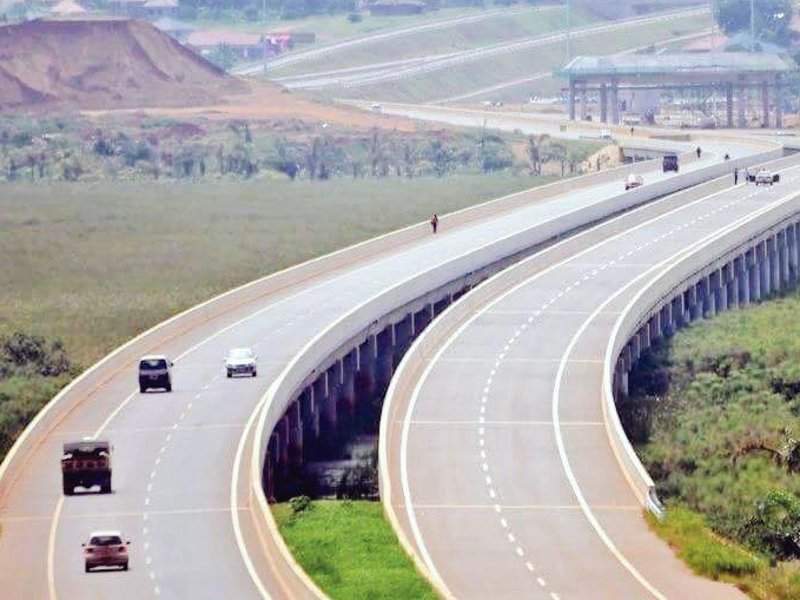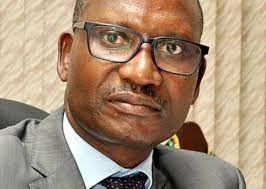TRANSPARENCY: CoST Uganda Commissions 2nd Infrastructure Transparency Index
BY PATRICK JARAMOGI
Kampala, UGANDA|SHIFT MEDIA NEWS| When scores of medics including Dr. Mathew Lukwiya from Lacor Hospital succumbed to death due to Ebola after exposing their lives to high risks, ideas began to emerge to the fore regarding the protection of the doctors, the people at the front line while fighting epidemics.
When Uganda was struck by Ebola in 2000, which claimed several people, including medics such as Dr. Matthew Lukwiya, Wayengera was a second-year student studying medicine at Makerere University.
Not so long, after this, there is light at the end of the tunnel, a ray of hope for protection of those at the frontline, and a much faster detection of the deadly Ebola and Marburg viruses. Thanks to the innovation of Uganda’s very own, researcher, Dr. Misaki Wayengera.
Dr. Wayengera works in the Genetics and Genomics unit, a division in the Department of Pathology at the Makerere University’s College of Health Sciences.
In an interview conducted in Uganda’s capital, Kampala, Misaki, a holder of PhD in Pathogenomics, who was recently recognized by the World Health Organisation (WHO) for his innovation graduated with a Bachelor of Medicine and Human Surgery degree at Makerere University, before studying Bioentrepreneurship in Toronto, Canada.
Apart from his innovations in establishing a model that can cure HIV/AIDS in 2012, Dr. Misaki is globally recognized for his innovation known Pan-Filovirus Rapid Diagnostic Test, which uses a paper-strip test, like the one used in testing for pregnancy.
According to Misaki, this test will be used for detecting Ebola, Marburg and other hemorrhagic fevers. Before this innovation, that provides results between 2- 5minuters, patients suspected of contracting Ebola or Marburg had to painfully and patiently wait for sample results tests taken to Center for Disease Control (CDC) in Atlanta for 2- 3 weeks.
With Misaki’s new innovations, it now means that the Rapid diagnosis that is so instrumental in detecting the virus will now be instant and help in containing further spread and controlling fatalities.
Misaki says that now that he has been rewarded and recognized by WHO, what is left now is the regulatory processes to have the kit approved by health authorities including the World Health Organization (WHO) and partners.
Recently President Museveni met and rewarded Dr, Misaki for his innovations after he was honored by the WHO.
How Did Misaki Make It?
Misaki was among the 2, 471 WHO Africa Innovation Challenge applicants who handled in their innovations from a total of 77 countries globally. From Uganda, Misaki wasn’t alone, he competed with two other finalists, a one Wasswa William and Denis Lee Onguzu. Wasswa invented the PapES that conducts automated diagnosis and classification of cervical cancer from pap-smear images, while Oguzu invented the National Ambulance Service a mobile, on-demand, hyper-local ambulance, police and fire service call and dispatch emergency system for Android and iOS.
Misaki, who comes from a humble background family, having been raised by his Mum in Mbale, Eastern Uganda, came into the limelight in 2012.
“My first attempt at grant worked out immediately I tried in 2012. I received the first grant of $100,000 from the Grand Challenges in Canada to help me develop a paper-strip test Ebola and Marburg viruses,” he said during the interview.
Over time, Misaki said he has received several grants from the European Union, France among others. He said that much as the politicians’ talk of spending several years in the bush fighting for peace, he can’t explain the millions of hours he has spent tediously in the lab to come up with what is now beginning to get recognized globally.
“What is being witnessed right now is as a result of long years of tenacious work in the laboratory, along with my other colleagues.
Who Else Worked With Misaki In This Innovation?
Misaki hasn’t been alone in the over 17 years of conceptualization of the innovation. He names personalities such as Dr. Nantulya from the Uganda Diagnostic Center, Dr. James Njuguna, Nantulya’s partner, Dr. Julius Lutwama from the Uganda Virus Research Institute, Janus Paweska from the NICD (National Institute of Communicable Diseases) South Africa, and the Ministry of Health Sierra Leone who provided the samples that were used in the lab.
“I also cannot forget the partners such as the CDC Atlanta and France, Luxemburg, Greece, US, Japan and Canada who have supported us with finance over the years,” he said.
Why Hasn’t Government Come Up To Support His Innovations?
The biggest question Misaki asks is why a Ugandan scientist who has developed a rapid diagnostic test that can detect Ebola proteins in less than five minutes at the point of care in the community ‘can’t’ be supported by his government.
In 2013 and 2014, Misaki Wayengera applied for a patent with the African Regional Intellectual Property Organisation and the World Intellectual Property Organisation.
Patents are granted to inventors to give them exclusive rights to make, use and sell their inventions. On average it takes about one year for a patent to be awarded by the World Intellectual Property Organisation and five years for it to be awarded by the African Regional Intellectual Property Organisation.
During this time, the inventor is expected to further develop the product and explore ways in which the product can be delivered to the market. If the patent is awarded, anyone wanting to use or sell this rapid test will need to seek Wayengera’s permission in order to do so. And this is what Misaki notes will generate huge cash for the country at large.
“Perhaps most people think that Misaki will benefit more, but Uganda will take credit as the home country of the scientist behind the innovation,” he said.
Wayengera’s journey to discovering the rapid diagnostic test has been a difficult one. It has been characterised by a desperate lack of government funding and support – although Uganda has been in dire need of a rapid test for Ebola.
Wayengera’s troubles underscore the plight faced by many young researchers in Africa – missed opportunities and a lack of political commitment towards innovation, research, and development.

“All that I need is something to the tune of USD$ 100 million (UGX360b). This will help us do much on TB tests, HIV cure study, and the Ebola RDT. Currently, the TB results take about three months, but with my innovation, we want to shrink this to about three hours only,” he said. He feels something is fishy regarding his various meetings with President Museveni.
“The first time I and my team met President Museveni at State House he asked us what we needed from him in form of support. He ordered that funds be released to support the innovation.
Between 2000 and 2001, Uganda had an Ebola outbreak in three districts of Gulu, Masindi and Mbarara. At the time, it was considered the largest outbreak on record, infecting more than 425 people. The mortality and morbidity rates of this outbreak have since been dwarfed by the more recent outbreak in West Africa, where more than 10,000 people have died.
“Usually, what increases fatalities is the delayed containing of the virus. Containing an Ebola outbreak is not possible unless cases are picked up rapidly, but progress in the invention of effective point-of-care rapid diagnostic tests has been sluggish, at least until the outbreak in West Africa,” said Misaki.
Wayengera has been researching this point-of-care rapid diagnostic test since 2008.
In his hunt for funds, he wrote a letter to the president’s office requesting financial support. He did not receive any response for two years. When he finally received one, the president’s office acknowledged the importance of his research for biodefence and pledged full support. However, his subsequent requests for funding went unanswered.
Undeterred, Wayengera then turned to Grand Challenges Canada, an entity funded by the Canadian government. In 2013 he was awarded a grant of CAN$100,000. Grand Challenges Canada was willing to give him an extra CAN$1 million for his research if there was a financial commitment – of any value – from his home government. Subsequent efforts to secure local funding from the Ugandan government through follow-up letters and social media pressure were unsuccessful.
In a rare turn of events, and a show of trust in his venture, Grand Challenges Canada offered Wayengera and his research team CAN$1.5 million. It was possibly due to the devastating Ebola outbreak in West Africa and beyond. The grant allowed Wayengera and his team to continue with their research, which led to a breakthrough.
What does Government say?
President Museveni who has an admiration for science has always pointed out that innovation can boost economic growth.
The Ugandan government has always been committed to science and innovation, demonstrating this by sponsoring science students over arts university students. Of late, it has been encouraging citizens to be patriotic. It wants citizens to assist in steering national development through a proposed patriotism bill currently before parliament.
After developing the test kit, Wayengera said in 2015 that he needed about $100m (about sh360b) to build a facility that he said will house modern laboratories. During a recent State House meeting, President Museveni said Government will support the efforts of researchers by establishing a manufacturing facility that will enable them to put all the products together.

Wayengera’s innovation on Ebola and Marburg diagnosis comes at a time when the region is battling with a fresh Ebola outbreak in the Democratic Republic of Congo (DRC). DR Congo was declared an Ebola epidemic in August last year, especially the conflict-riddled areas of North Kivu, South Kivu and Ituri on the borderline of Uganda, Rwanda and Burundi.
However, had the government given funding to Misaki, Uganda – and the world – would probably have benefited from a rapid diagnostic test for Ebola when the disease hit West Africa.
It still remains unclear why a government that is allegedly pro-patriotism, pro-science and pro-innovation, and governing a country that has repeatedly been struck by haemorrhagic fevers has not able to invest a single dime in an Ebola rapid diagnostic test.
How does the Ebola RDT work?
Misaki notes that he invented two prototypes. The first ones detect antibodies against the filoviruses (either Ebola, Marburg or both), while the second detects the surface protein of the filoviruses that is also secreted in the blood of infected persons.

“The second prototype is a definite marker of infection (since survivors or people vaccinated against the virus, may carry IgG antibodies). However, detecting IgM antibodies (which show up in the first 30 days following exposure to a bug, may be used as a correlate of acute infection), explained Misaki.
What lies ahead?
Misaki said that in Sept 2007, he incorporated Restrizymes Canada Corporation. “When I returned to Uganda, by March 2008, we had Incorporated Restrizymes Biotherapeutics (U) LTD as a subsidiary of the Canadian company.”
He said in 2005 the UN working Group on Genomics and Biotechnology highlighted the place for these subjects in the future knowledge economy. “Today, a single new molecular entity (NME) intended for drug, vaccine and or diagnostic development goes for between US$600 million to US$1.2 billion. Our group is working with over 10 NMEs at various stages. My dream is to build a facility in Uganda (for about US$100 million or UGX350 billion — the figure granted to youths by the Ugandan government as loans) which we can spin-off for perhaps as much as US$10 billion,” he said.

He said in that way, they can pay back the capital venturists their US$100 million with profit and pay tax of over US$1 billion, and may be build some state-of-the-art hospitals and laboratories at Uganda’s medical schools.








